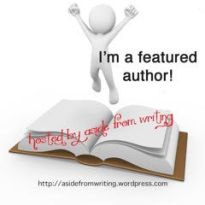
Yahoo Image Search
This week is going to be an experiment coming from an odd idea that I had. Stories go through phases just like matter. You have the idea, outlines, first drafts, final drafts, published versions, and other phases in the middle. So, I was wondering how stories are similar to the three main phases of matter. This could easily fall flat, especially when I get to the Gas post on Friday. *pauses for laughter* Anyway, let’s dive right into this and touch on the easiest phase: SOLID
Aside from books being something you can hold, the thing we look for the most with a story is how solid it is. Similar to matter, you need the pieces to be densely packed and organized for the whole to maintain its shape. One part falters and you can watch the entire structure crumble. We talk about stories with a lot of physical, solid-based words as well. How often have you heard an author talk about creating a strong foundation or compare the process to building a person with all the physical parts? I’ve even heard a few authors talk about their books as if they put together a house. So, the connection the solid phase of matter is pretty easy to make.
One way to create more solidness in a story is with planning, but this isn’t necessary. Yes, an outline can create a clearer path for an author, but you can get a similar effect from simply following your whims. It really depends on the person. We’re looking at the result too, which is a story that has very few holes. That’s the major goal for an author. We want consistency and continuity to avoid creating a tapestry that is unraveling with every chapter or page. Now, you can’t make it entirely unbreakable because everything has a weak point. Somebody could easily tear your story apart if they put their mind to it, which is a threat shared by all stories. Instead, you design it to withstand most of the attacks like a fortification wall around a castle. Sure, those with explosives or a battering ram can get through, but you’re protected from kicks, arrows, swords, and anyone who thinks a headbutt can finish you off. Again, solid doesn’t mean 100% unbreakable, but sturdy enough to survive most assaults.
Seems I keep coming back to a construction type of mentality here, which isn’t too surprising. This is how a lot of authors act even if they don’t realize it. We’re putting pieces together to build a whole. Characters, settings, subplots, main plots, emotions, action, humor, dialog, twists, and so much more are merged to create this single entity that we hope will stand tall. Yeah, I wasn’t as scientific as I thought I’d be here, but this one is fairly straightforward. This is why I mentioned a foundation in the title because nearly everything stems from this solid core. As complicated as it is to create, it’s pretty easy to figure out in this context. You need this solid part for the story to be coherent and readable.
What do you think about comparing a story to the solid phase of matter?





I really admire your ingenuity, Charles. This is a fabulous post.
I think in terms of an idea that is “solid” to me–one that will withstand the months of work and won’t “melt” over time. Many story ideas come to mind. But most of them don’t intrigue me enough to put effort into their creation. I think of those story ideas as the “gas” form. They quickly blow away over time. Some that are more liquid are those that intrigue me enough to write at least a chapter or even a few chapters. But I wind up putting them down, because I don’t have a solid enough of a plan to keep showing up on the page.
But as for books that are solid enough as far as critiques are concerned, I think you can have a book that is Pulitzer prize winning and still have people try to poke holes in it.
LikeLiked by 1 person
People poke holes in everything, but even a colander is a solid object. Don’t want to talk much about the other phases since they’re coming later. Good points on the original conceiving of the idea. It is a shame that gas and liquid ideas tend to fail though. That was a reason I wasn’t sure about going that way because it isn’t like those phases are dead ends in science. Do you think a liquid or gas idea still be worked on? Maybe all ideas hit the 3 at some point.
LikeLiked by 1 person
There’s always hope for these ideas. I keep them in a file labeled STORY IDEAS. Who knows? I might return to the someday.
LikeLiked by 1 person
There could always be a gem in there for another story too.
LikeLiked by 1 person
This is such an interesting take. I have never give an abundance of thought into this comparison, but reading this article I definitely see how it fits together. I look forward to reading about the next 2 states.
LikeLiked by 2 people
Thanks. It was something I was playing with as I wrote it. Really hoping the next two are just as good.
LikeLiked by 2 people
I’m sure they will be!
LikeLiked by 1 person
I am also.
LikeLiked by 1 person
Do you prefer the standard or the crystalline form for your solids? Are you considering the theoretical plasma phase as well?
LikeLiked by 3 people
I considered adding plasma, but figured that would be too complicated for this series. Wanted to keep things fairly simple to better focus.
LikeLiked by 1 person
I like the idea of a story being almost three dimensional so as to be thought of as solid. What a great compliment it would be to have someone say, “That was a solid story.”
LikeLiked by 3 people
That would be great. It’s one of those compliments that I think we all aspire to earn.
LikeLiked by 1 person
😀
LikeLiked by 1 person
Reblogged this on Chris The Story Reading Ape's Blog.
LikeLiked by 2 people
Thanks for sharing.
LikeLiked by 1 person
Welcome, Charles 😀
LikeLiked by 1 person
Comparing stories to solids is interesting, Charles. I’m also looking forward to the other phases. 🙂 — Suzanne
LikeLiked by 2 people
Thanks. This was definitely the easiest of the trio.
LikeLiked by 1 person
Reblogged this on Author Don Massenzio and commented:
Check out this post from the Legends of Windemere blog with the topic: Phases of a Story: The Solid Foundation
LikeLiked by 2 people
Thanks for the reblog.
LikeLiked by 1 person
You’re welcome.
LikeLiked by 1 person
I think construction is an apt metaphor. I even wrote a post years ago about something similar. Sharing this on my Friday links post.
LikeLiked by 2 people
Thanks. Glad you liked it. I should think more about that construction idea too.
LikeLiked by 1 person
I more often think of my novels as a stage play, and my rough drafts often include something like stage directions and choreography. When critiquing, I often tell people to focus everything, like stage lights, on a certain point or theme.
So maybe, in a way, that’s solid?
LikeLiked by 1 person
Not sure if that’s like solid matter, but it is a very interesting way to think of novels. I see mine as movies in my head, so I don’t have the directions. The viewpoint definitely makes the stories come off as a more visual, imagination invoking experience. Actually, I would say it makes things solid in that regard.
LikeLike
I think I’ve used that construction metaphor too. A couple of words that popped into my mind while reading your post were “nub” and “core.” A story may start with a pebble-sized idea that you can add stuff to. Sort of like a snowball with a rock in the middle… Okay, I’m thinking about that after shovelling almost a foot of wet snow off the front walk today. I’m looking forward to the liquid phase — flow, back eddies, turbidity, etc. Great idea!
LikeLiked by 1 person
I can see how the snow analogy would stick. It isn’t shovel worthy here, but the cold makes it really feel like winter. Didn’t consider the word ‘nub’, but I see how that works. Just that one little piece to get the ball rolling. Liquid should be fun since I did focus a lot on the flow aspect.
LikeLiked by 1 person
Pingback: Author Inspiration and This Week’s Writing Links – Staci Troilo